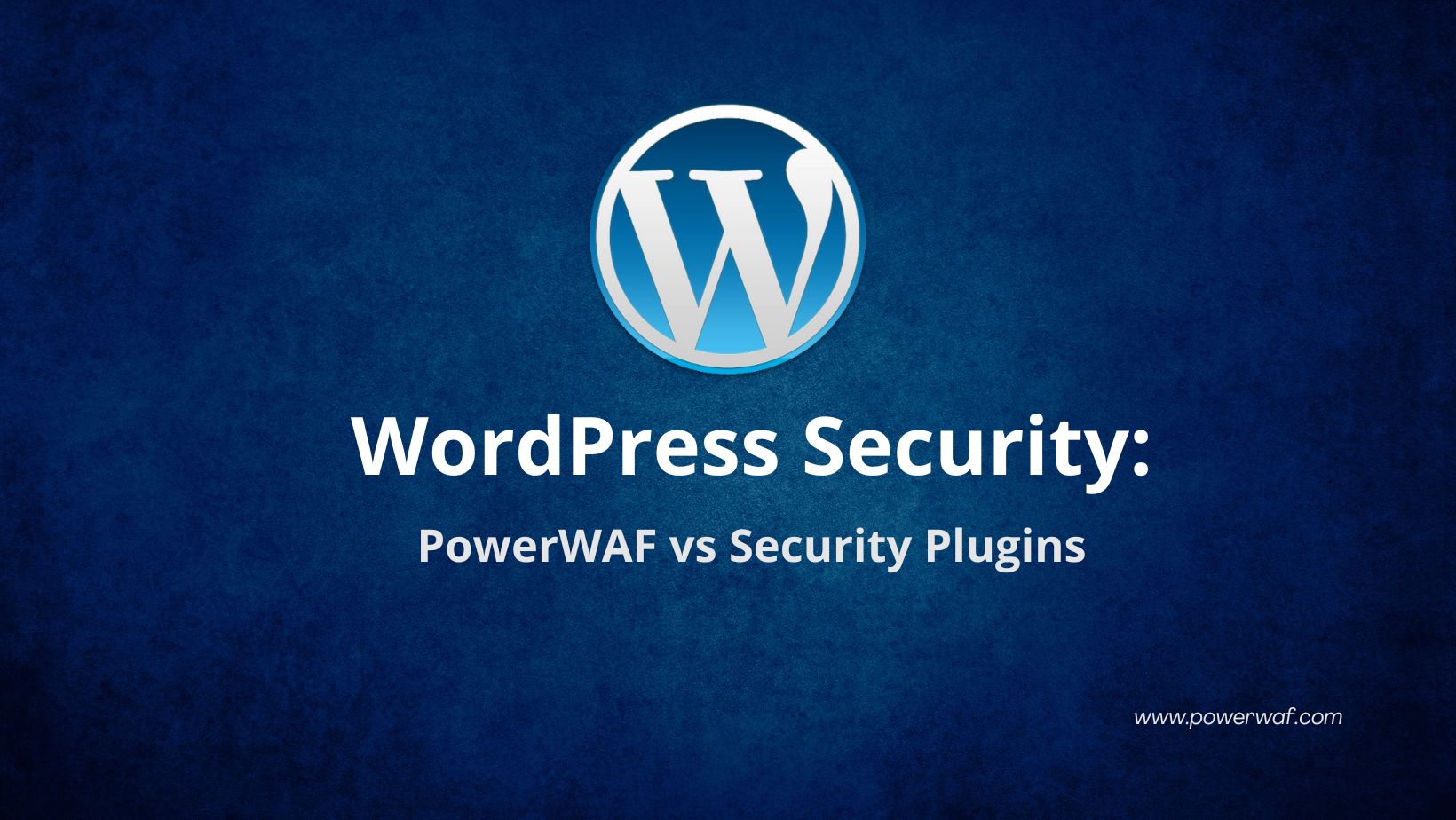
WordPress is one of the most popular content management systems (CMS) in the world, powering over 40% of all websites. As a result, it is also one of the most targeted platforms for cyberattacks.
To protect WordPress sites from malicious attacks, website owners can use a web application firewall (WAF) like PowerWAF CDN or a local security plugin.
In this article, we will explore the differences between using PowerWAF and a local plugin to protect WordPress sites.
We will examine the benefits of each approach and help you decide which option is best for your website.
Location of the defense
Traditional security plugins operate locally on your server, leaving your website vulnerable to direct attacks.
PowerWAF, being a cloud-based solution, acts as the first line of defense against potential threats. By intercepting and analyzing web traffic before it reaches your server, PowerWAF ensures that malicious requests and attacks are identified and neutralized in real-time.
This proactive approach significantly reduces the risk of your website falling victim to various online threats.
In contrast, local security plugins on WordPress operate within the server environment, reacting to threats only after they've breached your defenses.
This puts any plugin at a disadvantage, as there are hundreds of attacks that target the server itself (denial of service attacks, TLS protocol attacks, HTTP protocol attacks and web server attacks) that cannot be intercepted by the plugin, as at this point in the attacks, the plugin is not yet running on the server.
Server Load
Local security plugins can sometimes introduce performance bottlenecks, especially as your website grows in terms of traffic and complexity.
When a server is under attack, it allocates memory, cpu and network resources to process the attack, resulting in overloads and malfunctions. In other words, for a plugin to intercept a brute force attack, for example, it must receive large numbers of requests and block them one by one, which consumes server resources and slows it down, and in extreme cases a denial of service can still occur.
In contrast, with a cloud WAF such as PowerWAF, the attack is intercepted and blocked before it reaches the server, freeing it from having to process the malicious requests to defend against them.
PowerWAF, being a CDN-based solution, distributes the security workload across a network of strategically located servers.
This not only enhances the overall performance of your website but also ensures that your server resources are optimized for delivering content rather than handling security concerns.
Emerging Threats
PowerWAF leverages a vast network and benefits from continuous updates on emerging cyber threats.
This global threat intelligence ensures that your website is equipped with the latest defense mechanisms, safeguarding it against evolving attack vectors.
Local security plugins may lag behind in terms of threat intelligence updates, leaving your website exposed to newly identified vulnerabilities.
Streamlining Resource Utilization
With PowerWAF handling security at the edge of the network, your server is relieved of the burden of processing and filtering malicious traffic.
This results in reduced server load, allowing your resources to focus on delivering a seamless user experience rather than diverting attention to security measures.
The distributed nature of PowerWAF also ensures that your website remains accessible even during times of heightened security events.
Management and Updates
Managing security plugins on a local server can be cumbersome and time-consuming.
PowerWAF offers a centralized dashboard for easy management and monitoring of your website's security.
Automatic updates and real-time analytics provide you with the peace of mind that your website is protected without the need for constant manual intervention.
Security Comparison: PowerWAF CDN vs WordPress security plugins
This table provides a comprehensive overview of the security capabilities, contrasting the limitations of local security plugins with the advanced features and global protection offered by PowerWAF CDN.
| Security Aspect | Severity | Security Plugin | PowerWAF CDN |
|---|---|---|---|
| DDoS Syn Flood | High | Protection at this level is not possible for a plugin. | Robust protection against Layer 4 DDoS attacks. |
| Slowloris | High | Protection at this level is not possible for a plugin. | Effective defense against all kind of Slowloris attacks. |
| Attacks to HTTP Protocol | High | Protection at this level is not possible for a plugin. | Global protection with distributed network infrastructure. |
| Attacks to TLS Protocol | High | Protection at this level is not possible for a plugin. | Advanced TLS protocol protection with continuous updates. |
| HTTP Flood | High | Protection at this level is not possible for a plugin. | Mitigates HTTP floods efficiently with distributed resources. |
| SQL Injections | Medium-High | Some plugins offer basic SQL injection protection. | Strong defense against SQL injections with real-time analysis. |
| Brute Force Attacks | Medium-High | Localized protection; may rely on server resources. | Distributed defense against brute force attacks. |
| XSS Injections | Medium | Varies; some plugins may have XSS protection features. | Advanced XSS protection with global threat intelligence. |
| Malicious uploads | Medium-High | Some plugins offer protection against malicious uploads | Malicious uploads are blocked by PowerWAF before they reach the server |
This table illustrates the broader and more robust capabilities of PowerWAF compared to a traditional security plugin. PowerWAF's cloud-based architecture, global threat intelligence, and distributed network infrastructure provide a comprehensive defense against a wide range of cyber threats, ensuring that your website remains secure and resilient in the face of evolving attack vectors.
Recomended resources: Understanding WordPress Security
Start your 7 days Free Trial
Implement WAF & CDN for your websites